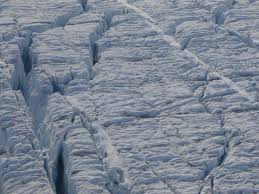
In just five years, 930 million cubic meters of crevasses opened up in the Greenland ice sheet, equivalent to adding a crack the size of the Great Pyramid of Giza to the world's second largest ice sheet every few days.

In a crazy demonstration of just how little Greenland cares about following the laws of physics, the large island is rising out of the sea. The rise is fueled by Greenland’s ongoing ice loss, which continues to melt as global temperatures rise.

Melting at the interface between ice sheets and the ocean in the Arctic is much more extensive than previously estimated. Melting in the Arctic could have catastrophic effects on the rest of the world.

A new study found that ice shelves in the region have lost more than a third of their volume in the last half-century because of rising temperatures — and if it continues, there could be "dramatic consequences" for glaciers, and the planet.

An international team of scientists was amazed to discover that Greenland was a green land only 416,000 years ago. Much of the Greenland ice sheet vanished when it got warm which caused a global sea level rise.

Releasing 1000 gigatons of carbon into the atmosphere will cause the southern portion of the ice sheet to melt. If it melts entirely, global sea level would rise about 7 meters. We've emitted about 500 gigatons of carbon already.

This meltdown has caused concern, as continued large-scale melting of Greenland’s ice could lead to flooding in coastal cities worldwide.

Greenland's massive ice sheet saw a record net loss of 532 billion tonnes last year, raising red flags about accelerating sea level rise, according to new findings.

New science suggests Greenland may be approaching a dangerous tipping point, with implications for global sea-level rise.

Key to the mission is NASA’s Ice, Cloud and land Elevation Satellite-2, which will use the laser instrument to measure - within the width of a pencil - the amount of land ice elevation changes in Antarctica and Greenland.

The fate of one small Greenland town depends on which direction the winds blow. They're the only thing standing between the town of Innaarsuit and a 11-million-ton iceberg that floated dangerously close to shore.
A team of NYU scientists has captured on video a four-mile iceberg breaking away from a glacier in eastern Greenland. This phenomenon, known as "calving", is a force behind the rise of global sea water levels.

The Dark Zone is a stripe of fast-melting ice towards the south-west of the ice sheet. This speedy melting is actually bad news for the planet, especially the areas bound to be affected by a sea level rise.